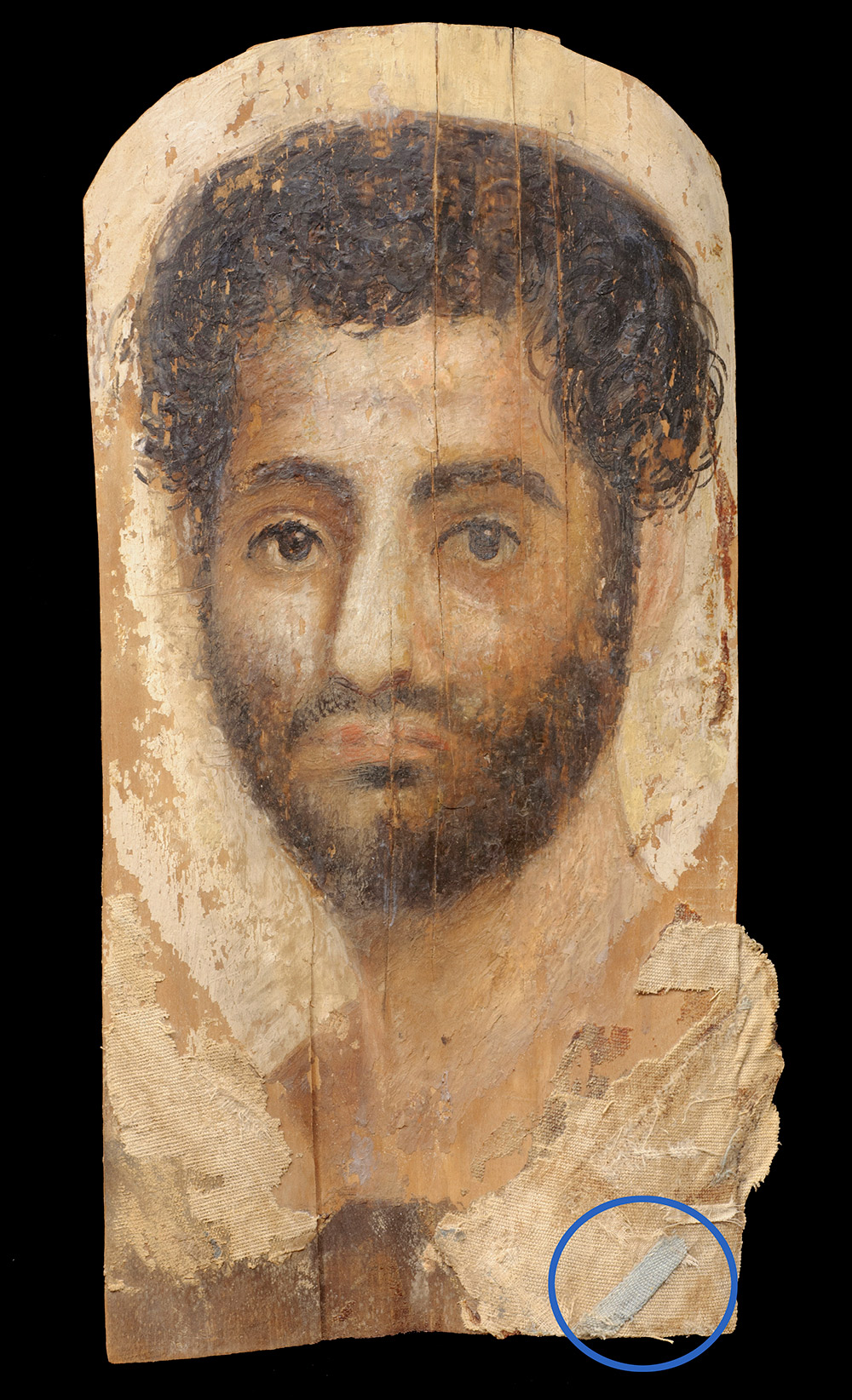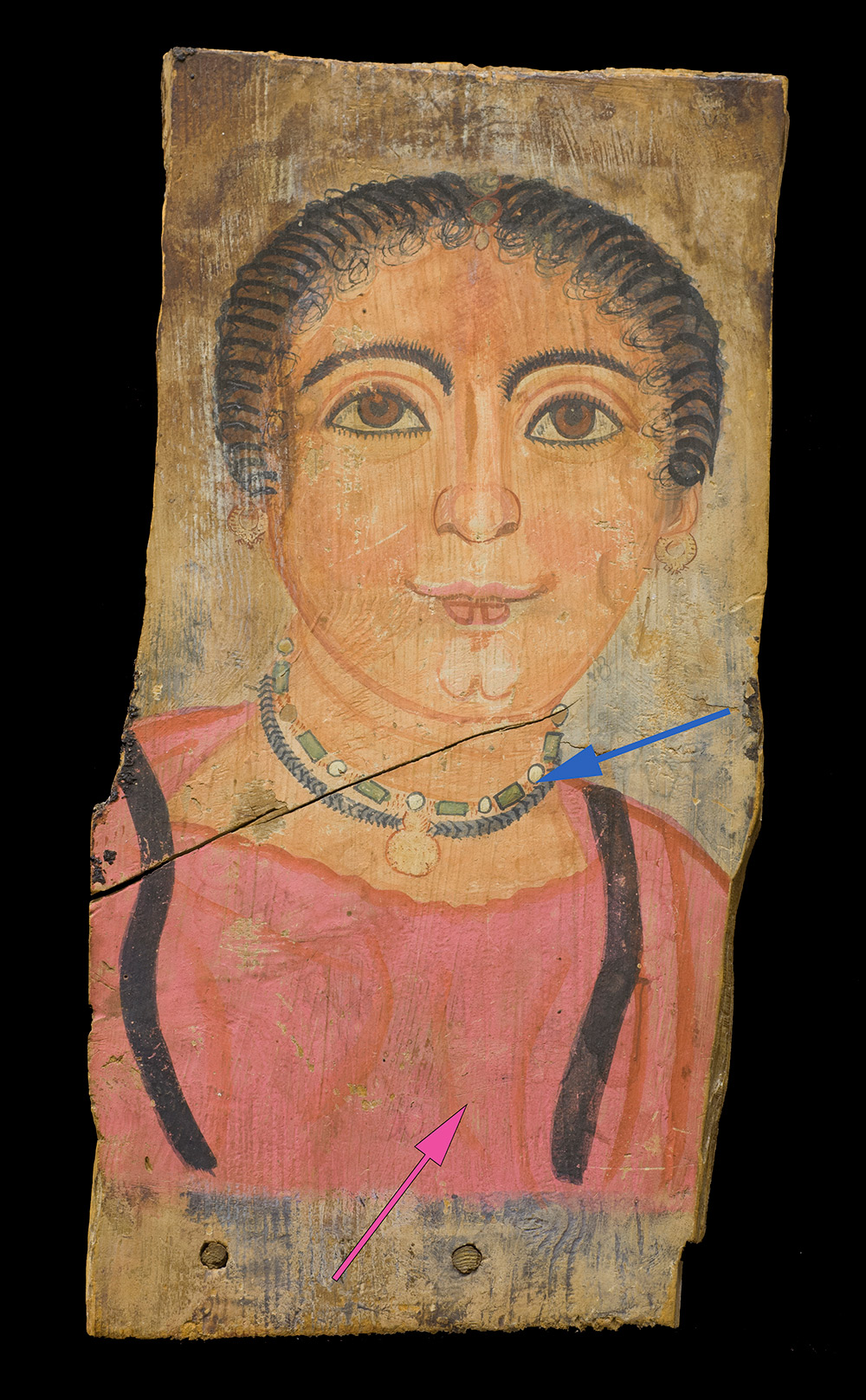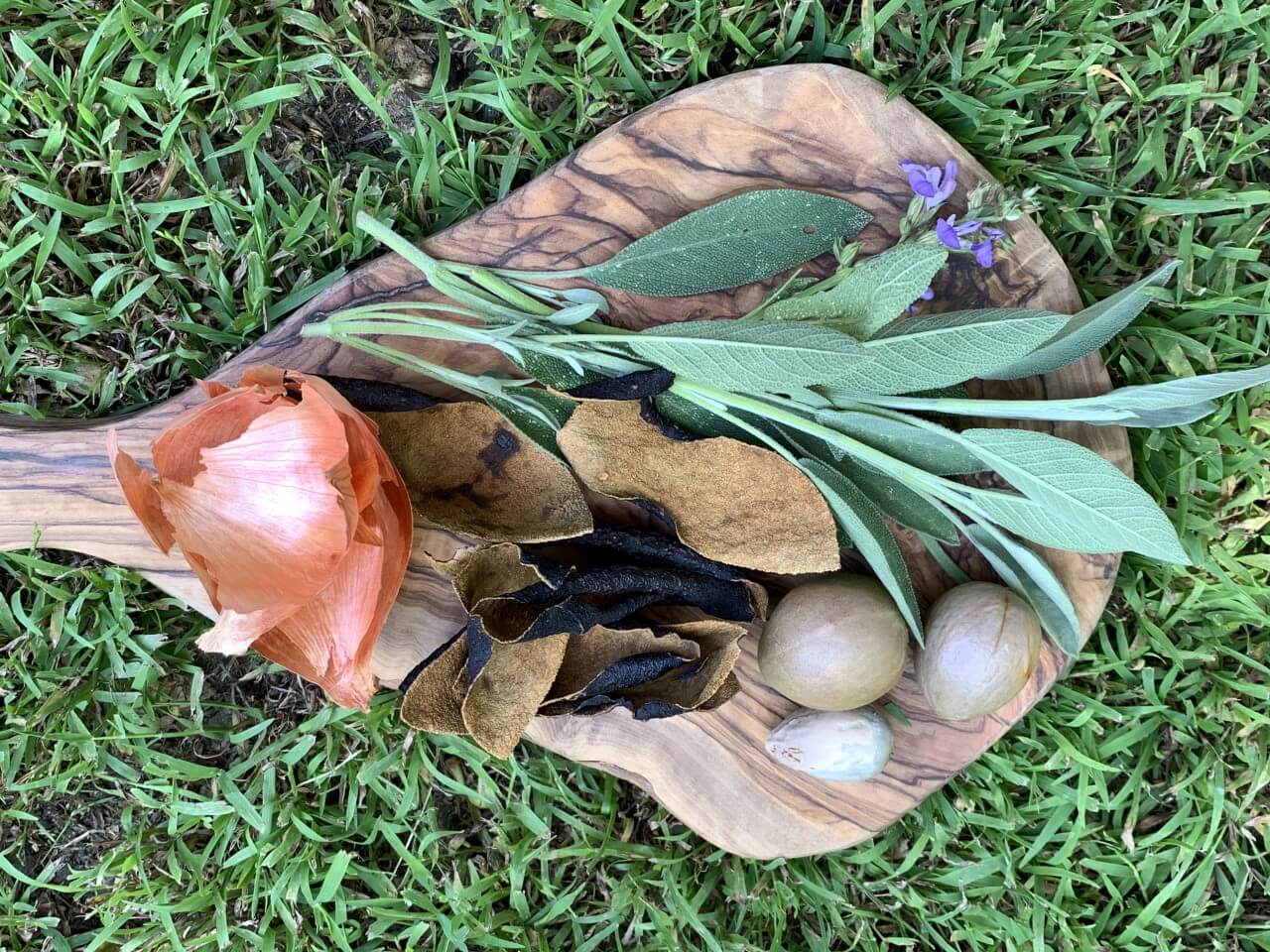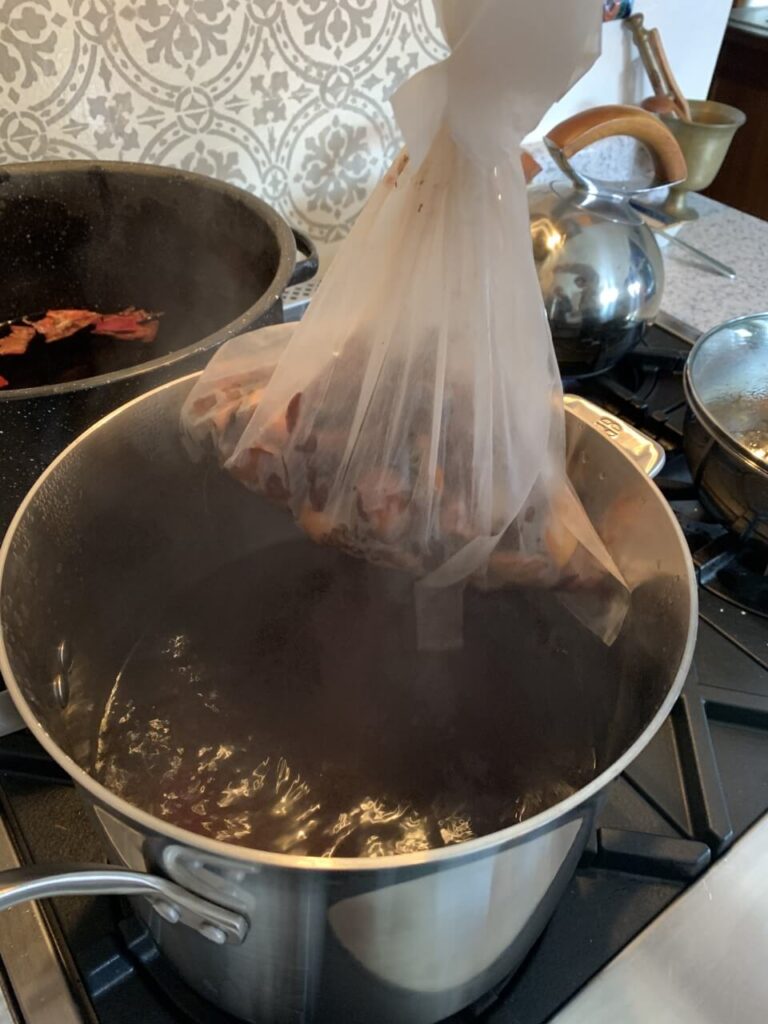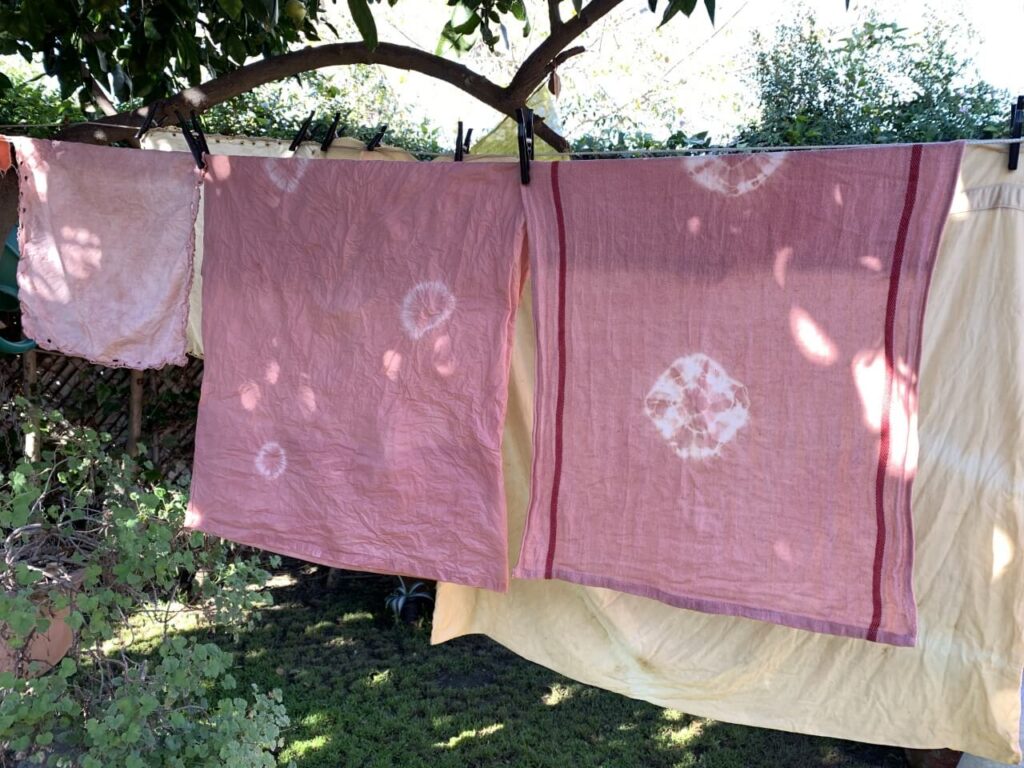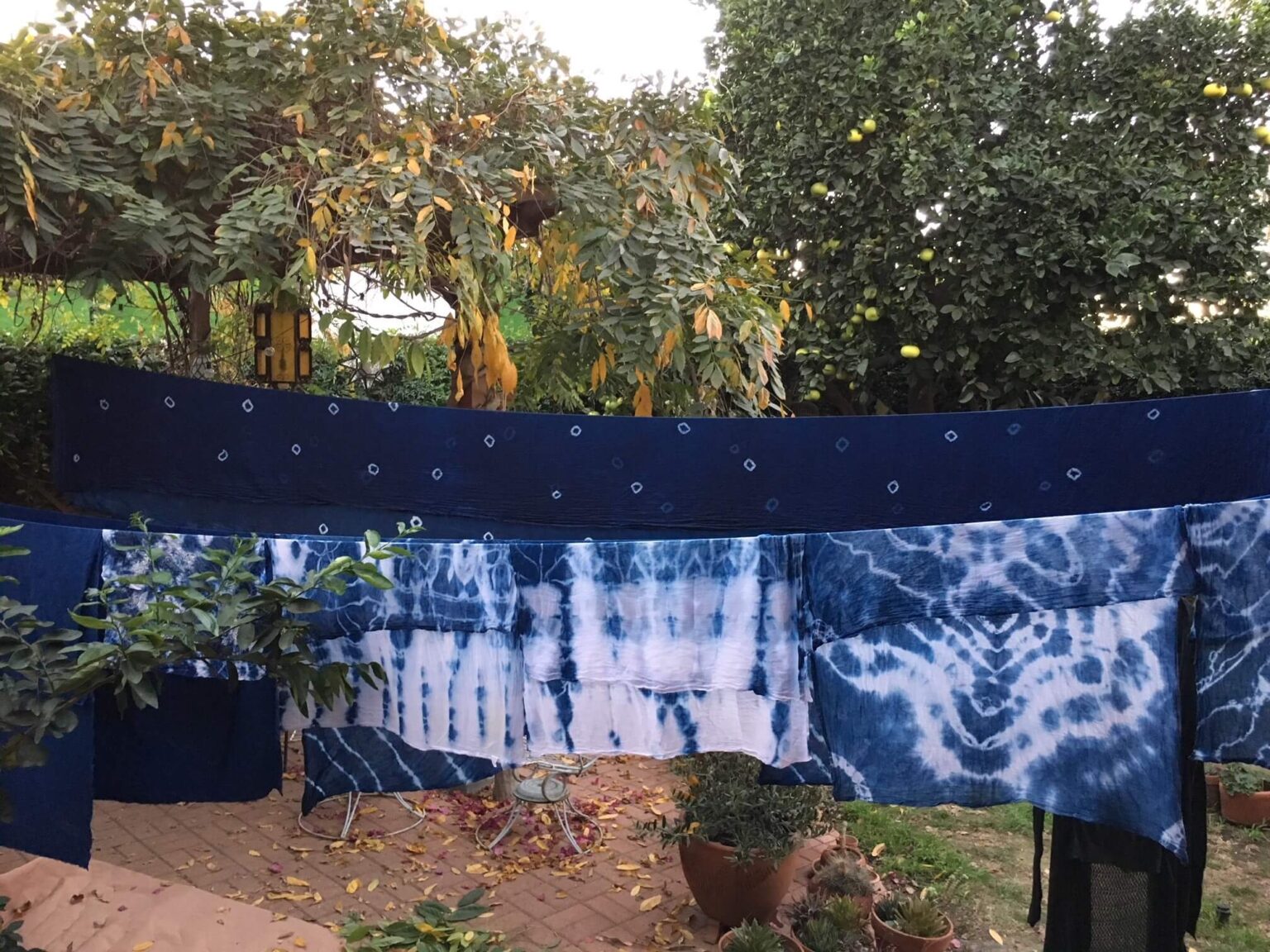DepthReading
Experimenting with Natural Dyes from Home to Learn More About Ancient Life
Mummy Portrait of a Bearded Man has a strip of ancient linen still attached to it that is dyed blue with indigo. In Mummy Portrait of a Woman, the subject wears a bright pink tunic that uses a pigment (called a lake) made of dye from the madder plant. Her blue necklace is colored by indigo. In ancient times, garments like hers would have likely been dyed pink using madder.
Textile, dyeing, and pigment production was an industry in the ancient world. In addition to creating a well-developed process, ancient artisans were resourceful and many materials were recycled for other uses. It’s quite possible that the madder lake used to paint this portrait’s tunic was produced from textile dye baths.
Dye production was not a simple process. Manufacturing dyes and pigments in Egypt, for example, required importing materials from the Mediterranean (like madder root and the parasitic insect kermes) or from as far away as India for the deep blue of indigo. One very special and expensive colorant called Tyrian purple, obtained from the murex shellfish, was “farmed,” requiring thousands of animals to produce just one gram of dye. Whether from an insect, plant, or sea snail, all processes involved dye extraction and complex preparation to make them usable and permanent dyes or pigments. It was likely only the elite who wore brightly colored garments.
At home, I knew indigo and madder are dyes produced from plants, and I also looked to other natural materials to understand the dyeing process. Many plant materials, such as onion skin, avocado pits and skins, and indigo do not require a fixative (mordant) to attach to fibers and become permanent. That makes dyeing from home very easy.
My son, a high school senior hoping to become a fashion designer, joined me on this journey. Together we hunted for items and cooked up the materials to dye. We grabbed anything we could find: old T-shirts, cloth napkins, table cloths, and kitchen towels were all fair game.
In addition to trying possible methods of dyeing used in antiquity, like pomegranate, onion skins, and herbs, our current experimental goal was to see what range of colors we could achieve and how simple manipulations (such as changing the pH and adding iron) to the water would affect the final outcome.
We ended up with a wide range of reds, pinks, yellow, and tan, but our favorite technique by far was indigo dyeing (not from our yard, but in a nod to modernity, from a kit purchased through Amazon).
The process was magical, like developing photos. We dropped the white fabric into the bath, and when it came out, it appeared green. But as it was exposed to air, it transformed into a magnificent blue.
Dyed blue fabric hanging to dry
As a sea of blue stretched across our yard, I imagined the ancient dyer’s workshop, fabrics blowing in the wind with the Nile or the Mediterranean as a backdrop. Exploring nature’s colors not only illustrated the ingenuity of ancient artisans but also revealed their expressive desire for beautiful things.
This sustainable practice has also become part of contemporary fashion and design, a very good lesson for my son. For me, the lesson was a deeper appreciation of ancient artistic practices. The next time you throw those peels into your trash or compost bin, think about their potential and how color was first discovered and its effect on our daily lives. As Pliny the Elder wrote so long ago, “The most valuable discoveries have found their origin in the most trivial accidents.”
Category: English
DepthReading
Key words:

